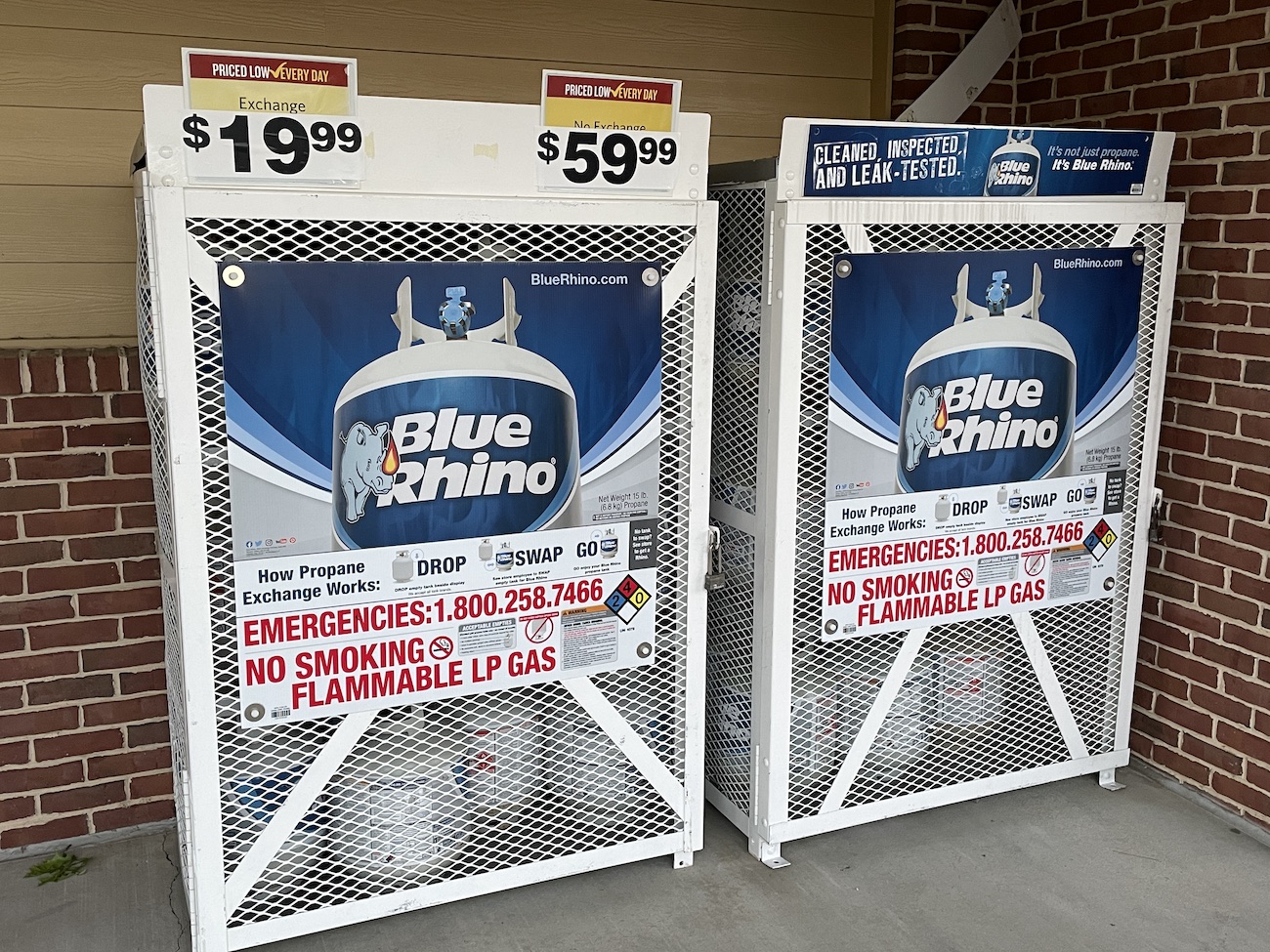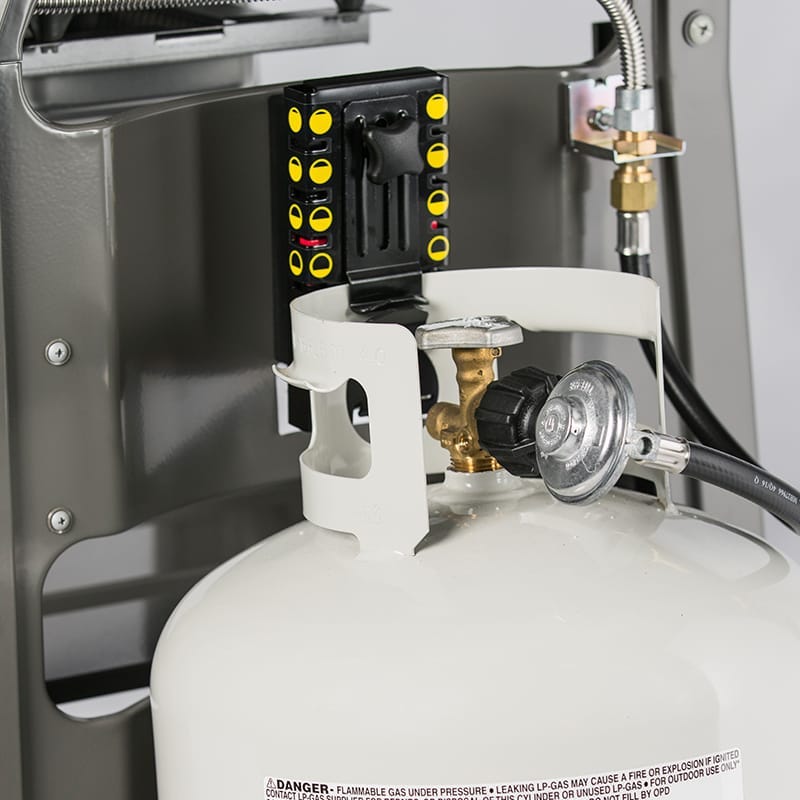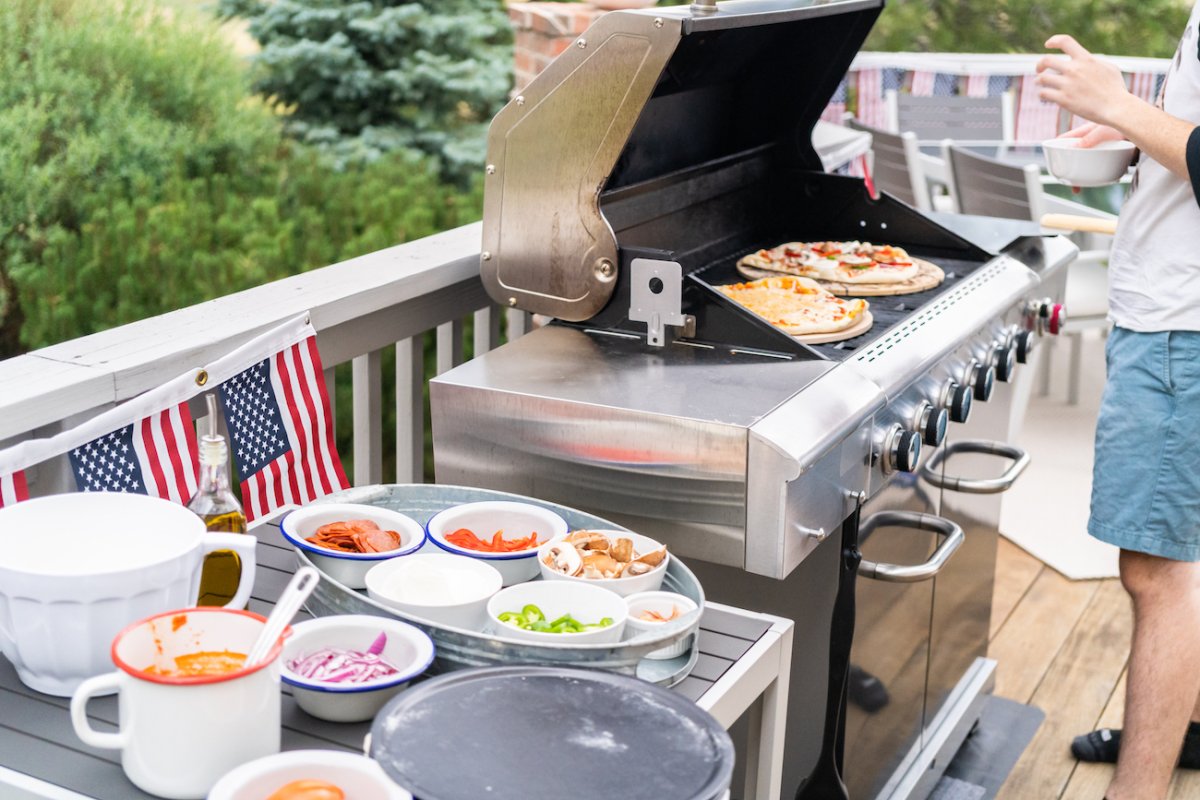We may earn revenue from the products available on this page and participate in affiliate programs. Learn More ›
If you’re like me, your gas grill is running almost daily through the warmer months of the year. That means you’ll be going through more than a few propane gas tanks from Memorial Day to Labor Day. With inflation impacting pretty much every consumer product on the market, I recently began wondering just how much more I would be paying to keep my gas grill going all summer long. Thus, I began a quest to find the best deal for propane. I found that while gas stations and grocery stores offer the most convenient option for purchasing propane, there are much better deals out there if you’re willing to look for them.
Prices May Vary
As with any other fuel, the price for propane can vary significantly in different parts of the country. My gas grill and I happen to reside in North Carolina where propane prices are currently holding steady. Propane prices will certainly vary for those who live in other parts of the country.

Gas Stations and Supermarkets
I began my search by heading to the most convenient places to get propane: gas stations and supermarkets. I surveyed prices at Harris Teeter (a local grocery store), Food Lion, Walmart, and two local BP gas stations, all of which do propane tank exchanges only. Prices for all four of the locations I surveyed were within a dollar or so. Prices at Food Lion and Harris Teeter were identical at $19.99 each, while Walmart came in a buck lower at $19. The two BP locations I surveyed were nearly the same as Walmart at $18.95.
Home-Improvement Stores Holding Steady
The Home Depot and Lowe’s, like supermarkets and gas stations, also offer propane tank exchanges. Given that the cost of building materials inside these stores have been skyrocketing, I was surprised to find that prices were holding steady for propane at these locations. As with the gas stations and supermarkets I surveyed, the prices at both were consistently around the $20 mark. The Home Depot was charging $19.98 to refill a 20-pound tank, while Lowe’s was virtually the same at $20.
U-Haul Does Refills
U-Haul, the largest moving truck rental company in the nation, offers propane refills at its truck rental locations. What sets it apart from other suppliers is that it publishes the cost of its propane refill by the gallon right on the website of each individual location. If you have six U-Haul locations in your area, you can quickly go online and check to see which one has the best price. Prices at each location can vary significantly; per-gallon rates for U-Haul propane refills at locations in my area ranged from as little as $3.50 per gallon ($15.75 for a tank) up to $4.50 per gallon ($20.25 for a tank).
Local Suppliers Offer Good Prices
Not satisfied with the prices from the larger chains, I hunted around for local suppliers. I found a local company that sells and rents party supplies and landscaping equipment that also offers propane tank refills (as opposed to tank exchanges) for just $16.95, which is about $2 to $3 cheaper than they are at local gas stations and supermarkets. A local farm supply company that also offers propane refills was a bit higher at $18.50.

Costco Is Propane King
Warehouse clubs offer the best prices when it comes to gasoline, so it makes sense that their propane prices are also better. I just didn’t expect them to be nearly as low as what I found. While my local Sam’s Club doesn’t do propane refills, BJ’s and Costco do, and their prices for propane were by far the best. Filling up a 20-pound propane tank at BJ’s costs just $14.49, while Costco blew away the competition with a per-gallon rate of just $2.82, which translates to just $12.69 to fill an entire tank. Of course, you’ll need to be a club member to take advantage of these fantastic rates.
Choose Refills Over Exchanges
As I quickly found when researching propane rates, if you want to get the best deal, find a place that does refills. It’s much cheaper for a propane gas distributor to refill your 20-pound tank from a large on-site tank than it is to stock individual 20-pound tanks for exchanges. How much can you save? On average, you can expect to spend 33 percent more for a tank exchange versus a refill.
Beware of Short Filling
Finding a place that does tank refills versus exchanges can be a challenge in some locations. If your only option is a tank exchange, choose a gas station, big-box store, or supermarket you trust to make sure you get a full tank. Short-filling, which is the process of selling propane tanks that aren’t filled to capacity, is a problem in the propane industry.
What Rising Prices?
As I began my survey of local propane gas tank prices around me, I was surprised to find that prices hadn’t changed significantly in the past year. Either propane prices in my neck of the woods are holding steady in the face of inflation, or it’s the calm before the propane gas-rate- hike storm. At any rate, regardless of what the economy is doing, it’s clear that hitting up a refill station for your propane needs is far more economical than doing a tank exchange.
Shop for Propane Tanks and Accessories at Lowe’s
Shop for Propane Tanks and Accessories at Ace Hardware
Shop for Propane Tanks at The Home Depot
Shop for Propane Tanks and Accessories at Walmart
Prices are accurate as of publication on June 29, 2022.


